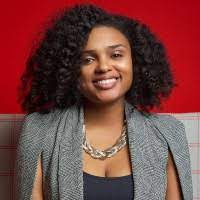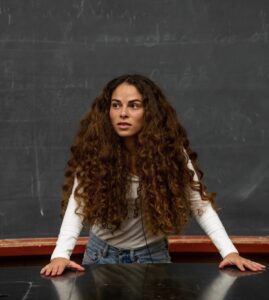Community-led Solutions to Education
 October 25, 2023
Category: Feature, Featured, Solutions
October 25, 2023
Category: Feature, Featured, Solutions
From IEPs and Honors Classes to project-based learning and out-of-school time opportunities, the needs of our youth vary when it comes to education and receiving the knowledge and resources they require to progress in school, career, and life. While Generocity has spent the last several weeks diving into different aspects of the needs and solutions to education – our community, near and far, have insights and solutions that we should all take into consideration.
“Rooting Our Youth”
Insights from a Generocity Reader
“…Before modern schools, what passed for education was growing up in a household, perhaps a farm, or in a system established to curate the destiny of youth, channeling them in certain vocations or appropriate and approved walks of life. I’m not here to provide data, statistics, or even anecdotes about the past – we each have the capacity to look up what we want to know; instead, I’ll say that questions about parents, family, and tradition are not asked enough. Parents are the source of each and every child who walks into a pre-school or kindergarten classroom, though they seem at times like uber/lift chauffers or grocery, laundry, and shelter servants.”
What should we be asking?
“Of course, a child can reach adulthood and reject everything [they] learned at home, using the tools acquired at school to build a life at odds with all she’s ever known. But isn’t that destiny too shaped by the past; to build a new life which categorically rejects the vestiges of lived experience is, well, just that. This may seem so far off the topic of Collaborative Transformation, and maybe it is. My response to the question, “What questions should we be asking ourselves?” is who am I, and how am I rooted in this world, this nation, society, and community? What can make today the most special day yet of my life – the concert, game, or other spectacle I should attend, or a gadget that would be the king of all my gadgets? Or would it be to look at the trajectory of my life and be thankful for the experience of knowing my parent, siblings, relatives, and neighbors, as I prepare to be born yet again?”
Connection to Something Bigger
“A child knows that there is an agenda to school, even before they happen upon that insight in their schoolyard. What I asked myself back then was, how do I deal with all this and make it back home- to my safe base? The child decides they are going to either lead, follow, or stay safe amidst a plethora of choices. If they dialogue regularly with their parent about these options, we can reasonably expect that their choices are “conscious.” My concern is that so many of us lack those conversations, discussions, and even arguments at home that, as adults, we are cast adrift and feel aimless, all while searching in the darkness for purpose. For me, schools provide tools and information that can aid the person who is part of something bigger than himself, be it a family and community or a nation. If they feel a real connection and a rootedness with something that embraces the horizon, then they will be focused, and we can be confident that they will perform at the level of their capabilities, and most importantly is that they will likely be content.”
“Letting Youth Lead”
Insights from Clinton Global Initiative Commitment to Action Partner Sage Lenier
“Berkeley has an infrastructure for student-led classes. And that’s not something that’s very common. I’ve heard about it at a couple of universities, but Berkeley is, by far the most robust, but they’re typically smaller classes. I started teaching with 25 students, in my sophomore year at 19. But I had a vision. I was gonna grow this thing. And we actually had to bend the rules to get the big class size that we did, because it just had never been done before. It wasn’t banned. [It just wasn’t a thing.] So within four semesters, we had 160 enrolled, in my last semester teaching, we had 300. To date, we’ve had 2000 people go through this program. And it just blew up and became so popular because it’s solutions-focused and it’s action-oriented.”
The Connection
“The majority of the environmental curriculum that is out there is just so focused on understanding the problem and my realization was that the “amendment moment” is so small. Most people don’t know the first thing about the planet and are not in their careers or lifestyles in any way making informed decisions. And beyond that, what is there, is so focused on understanding the problem that I was just watching all these really passionate people around me wilt and be pushed out of it already.”
Student Identified Gaps
“So what I set out to do was go beyond the concept of climate change. I think the hyperfixation on the term climate change is such a Western idea, right? We can flip a switch tomorrow and the whole world is run by renewable energy, but we’d still be in a crisis of resource extraction and exploitation of people like the whole damn system is messed up. Whether it’s ocean pollution, water, pollution, plastic, whatever, whatever. It’s not just climate change. It’s an ecological crisis. So that being said, we don’t really do climate change head-on in that program, which is so unique. We talk about food systems and ecosystems because that’s a good quarter of greenhouse gas emissions together, we present a vision for a circular economy a low carbon alternative to like, what we’re doing right now low resources as well, keeping recycling. We do food systems, urban planning, decarbonization, screen-integrated design, and the supply chain. From an environmental justice lens we ask, who is in the system? Who does the mining? Who does the farming, the truck driving the sewing? And how must the system work better for them?”
Planting the Seed
“So it’s very holistic, looking at climate change, but through the full scope. Climate change is caused by the production of stuff, it’s caused by transportation. So what different systems do we need, not just electric cars. So now 2000 people go into these rooms holistically, and I feel like this is the most important thing I can do. I love hearing the feedback from people and what they decided to do, just because we were able to plant the seed, they go off into the world and, do the damn thing.”
Letting Youth Find their Connection to Something Bigger
“I think it was important for the purpose of the energy, passion, and personal connection that this was for youth by youth. But at the same time, this needs to be institutionalized. Sometimes educators reach out to us, so currently, we’re working on redesigning a curriculum through the nonprofit we launched that is solutions-oriented and action-focused. We have a 98% approval rate, and 72% of our students said they went on to get involved with environmental action as a result of this program. Most schools don’t have those numbers, so they have something to learn from us.”
###
Are you learning from youth? Tell us how!
What organizations put youth passion and leadership at the forefront of their education and work?
Project
EducationTrending News





Engage
Are you learning from youth? Tell us how!
What organizations put youth passion and leadership at the forefront of their education and work?
Share your Insights





